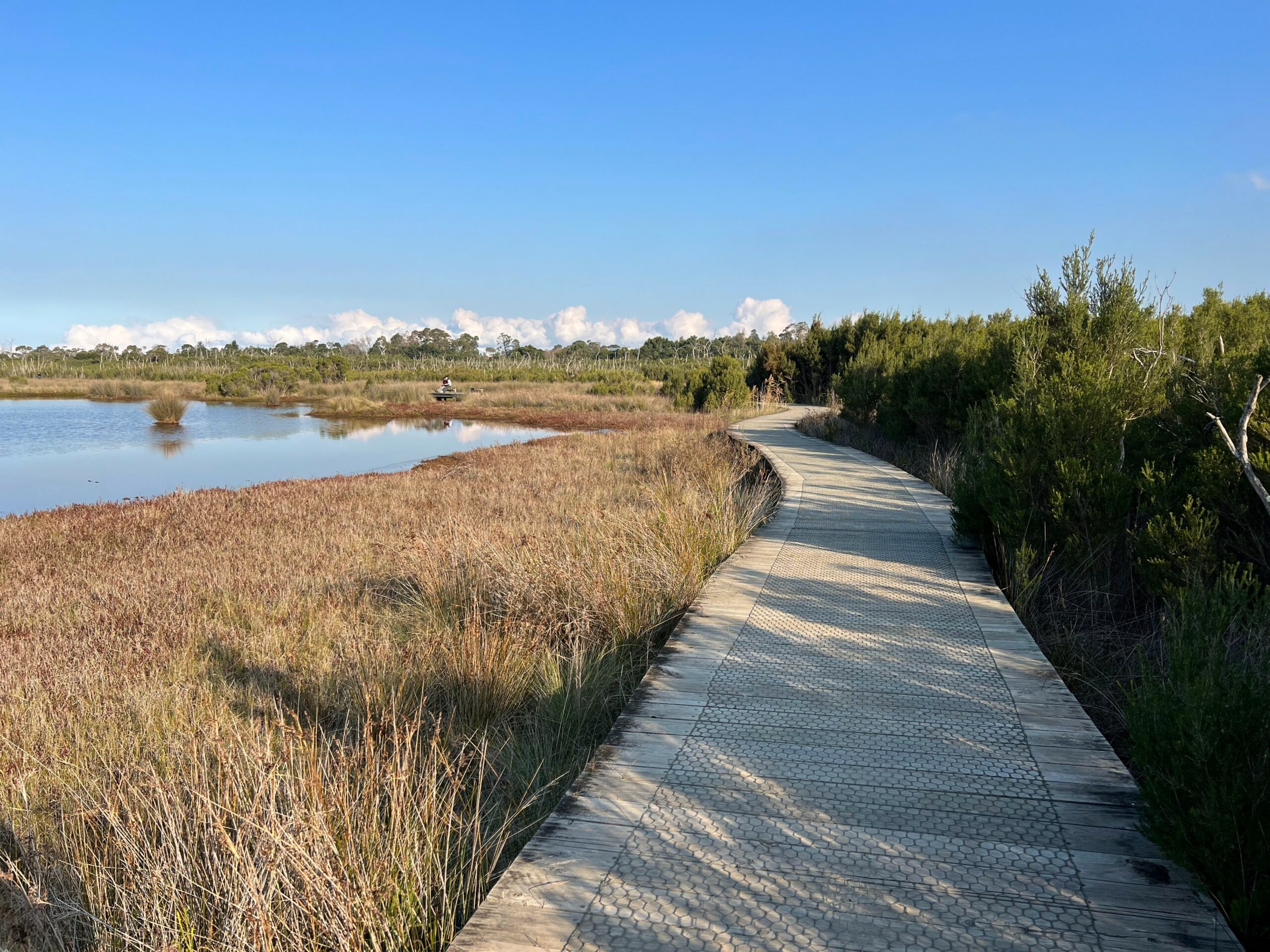Last Saturday we were visiting Moonlit Sanctuary in Mornington Peninsula. We decided to go for a walk in Warringine Bushland Reserve after the lunch.
We started from Hastings, a small town on the Western Port Bay.
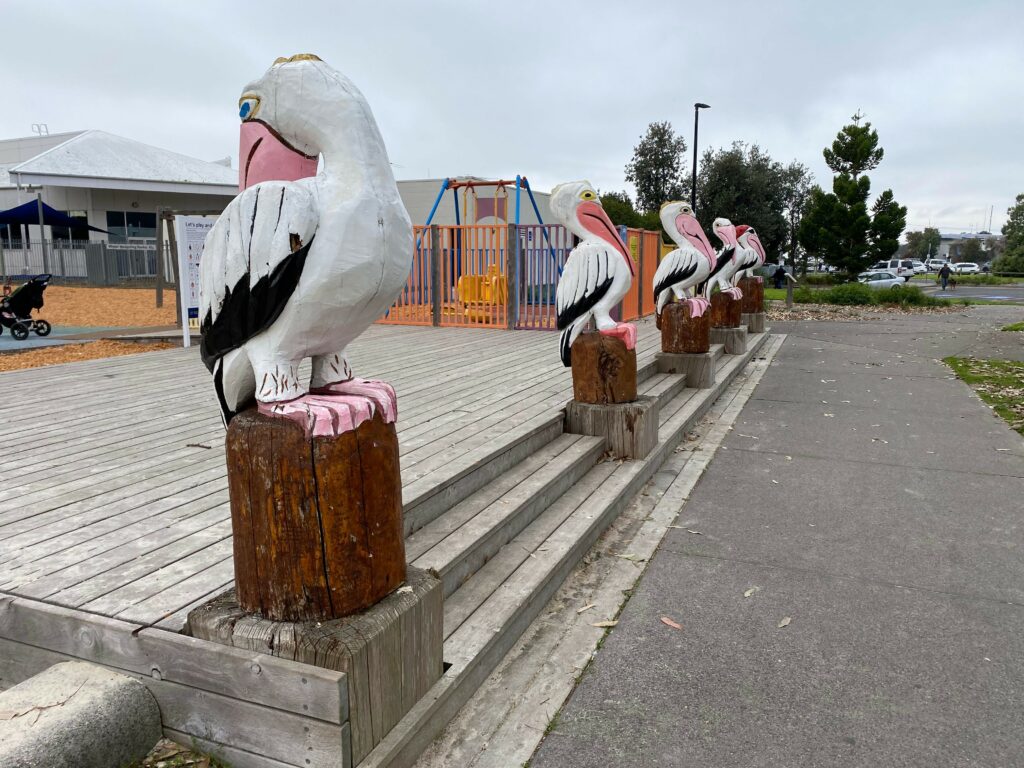
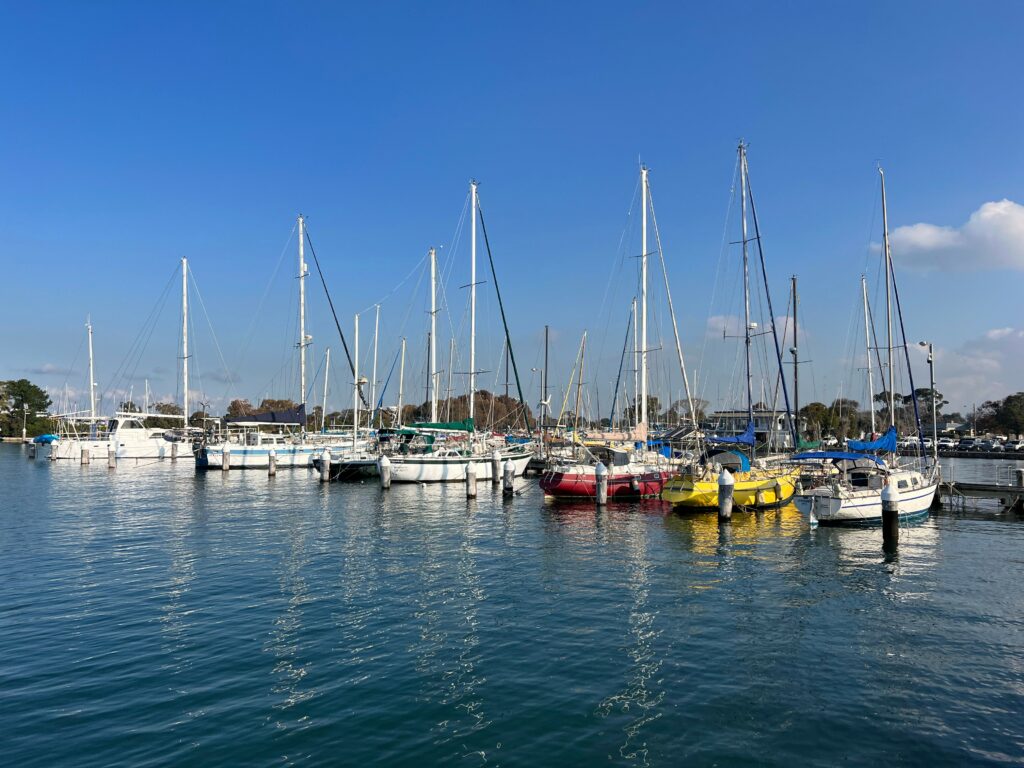
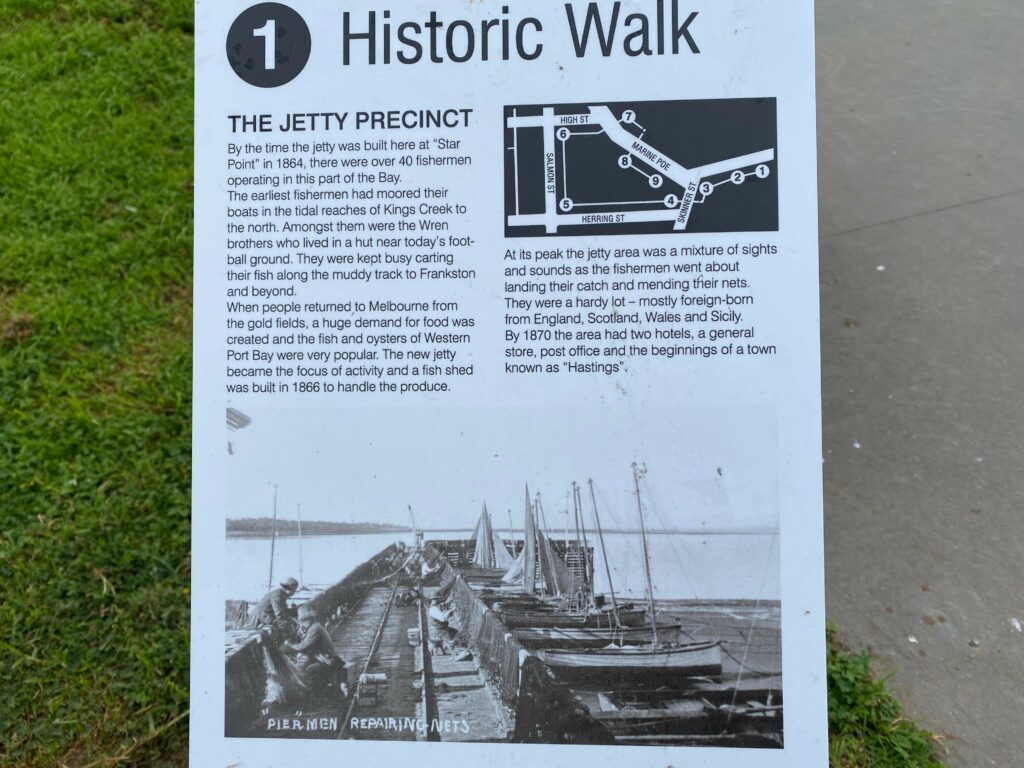
The sign reads:
THE JETTY PRECINCT
By the time the jetty was built here at “Star Point” in 1864, there were over 40 fishermen operating in this part of the Bay.
The earliest fishermen had moored their boats in the tidal reaches of Kings Creek to the north. Amongst them were the Wren brothers who lived in a hut near today’s foot- ball ground. They were kept busy carting their fish along the muddy track to Frankston and beyond.
When people returned to Melbourne from the gold fields, a huge demand for food was created and the fish and oysters of Western Port Bay were very popular. The new jetty became the focus of activity and a fish shed was built in 1866 to handle the produce.
At its peak the jetty area was a mixture of sights and sounds as the fishermen went about landing their catch and mending their nets. They were a hardy lot-mostly foreign-born from England, Scotland, Wales and Sicily. By 1870 the area had two hotels, a general store, post office and the beginnings of a town known as “Hastings”.
We began our walk on a wide, dirt earth trail.
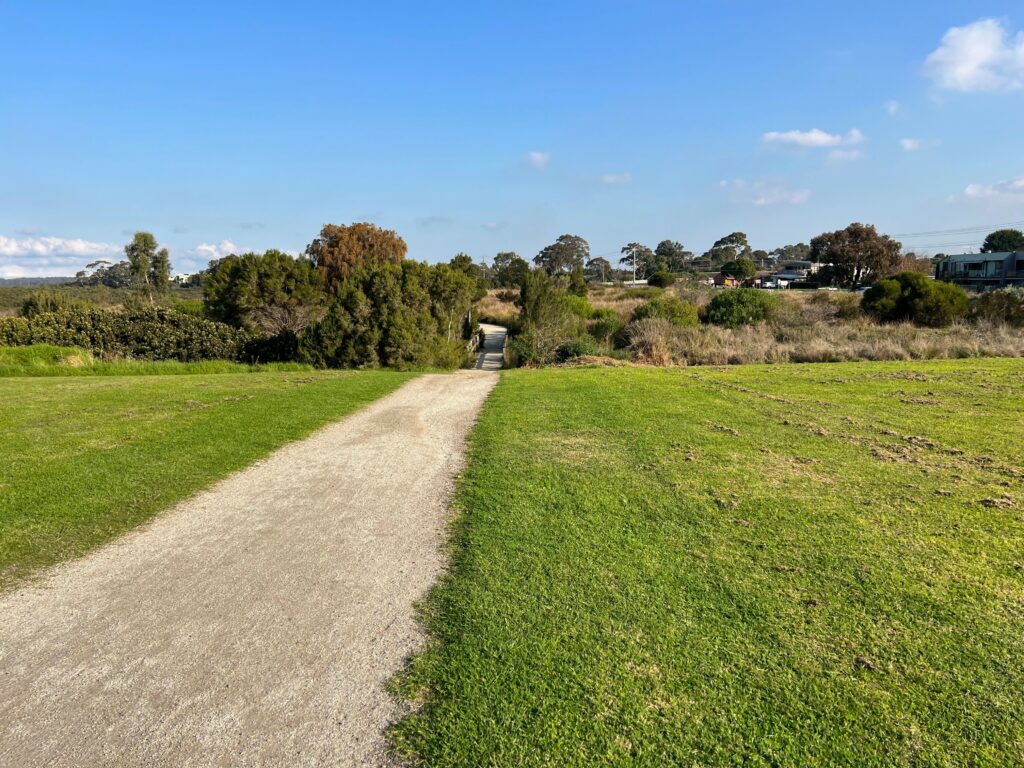
Soon, the boardwalk started.
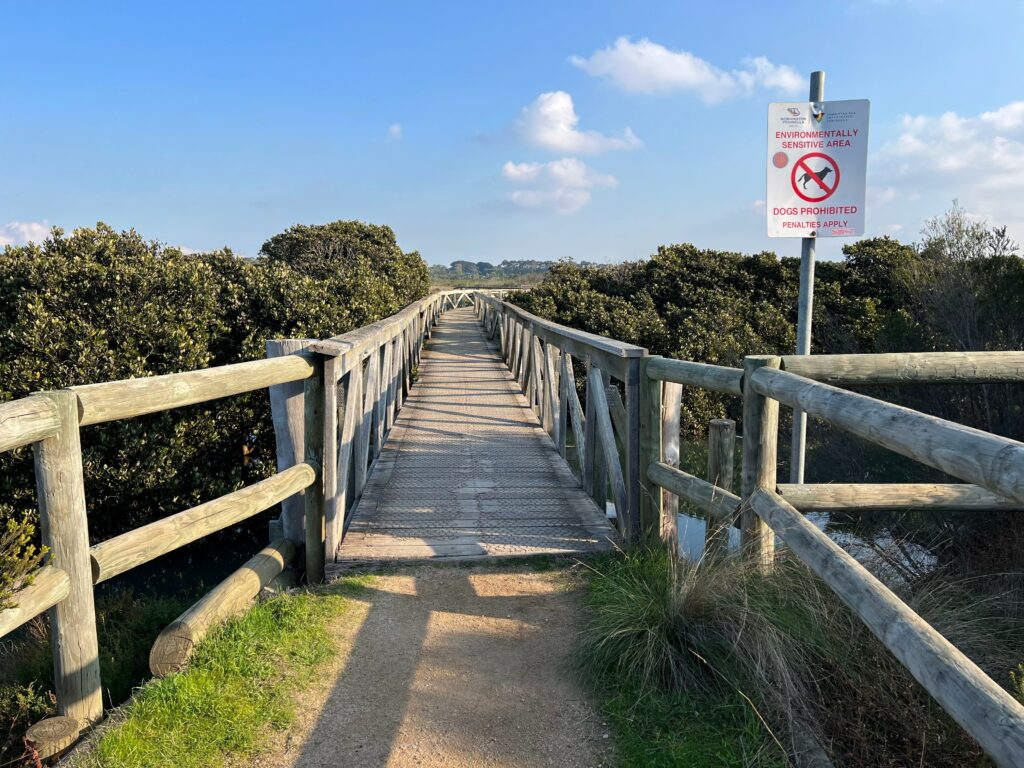
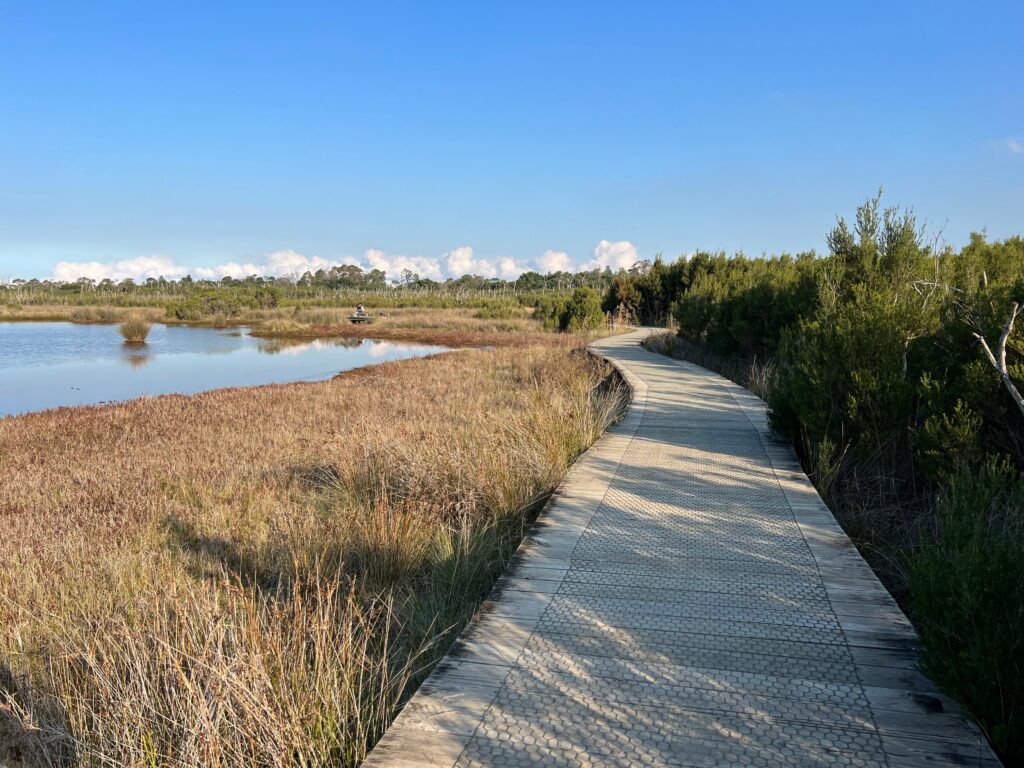
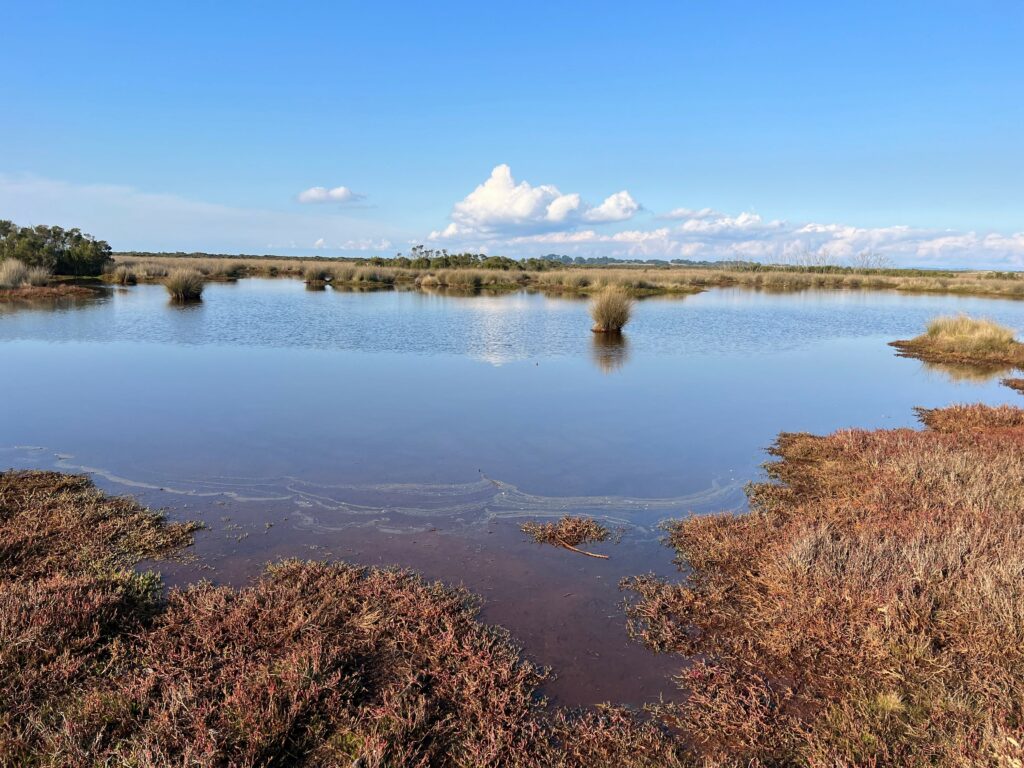
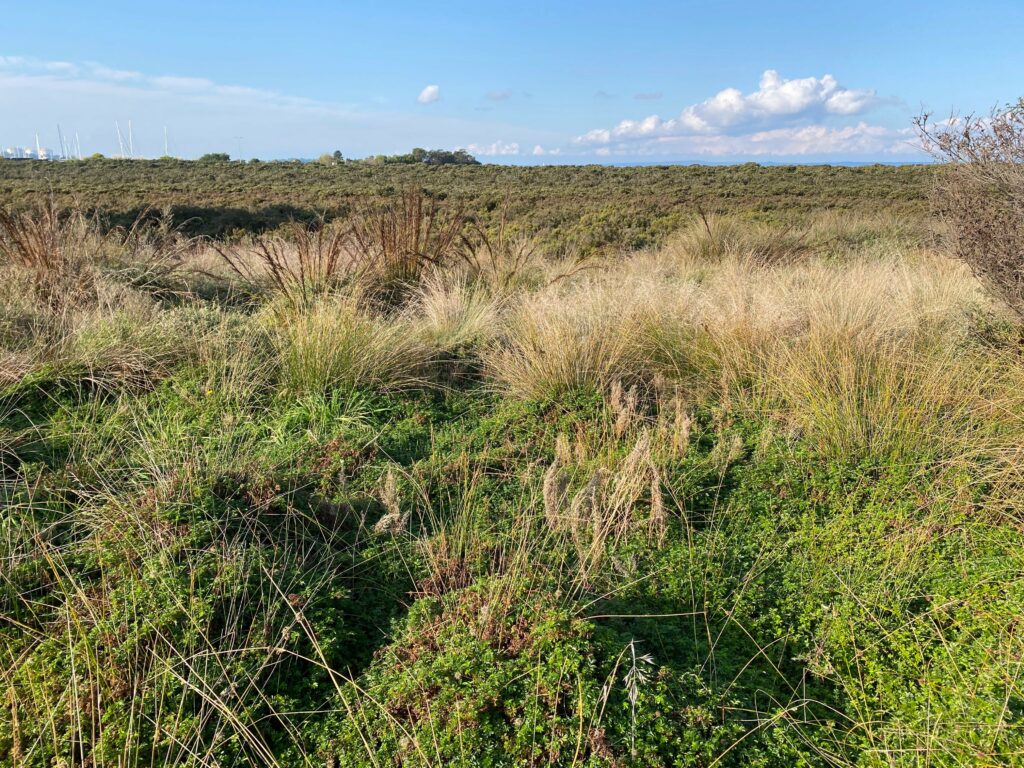
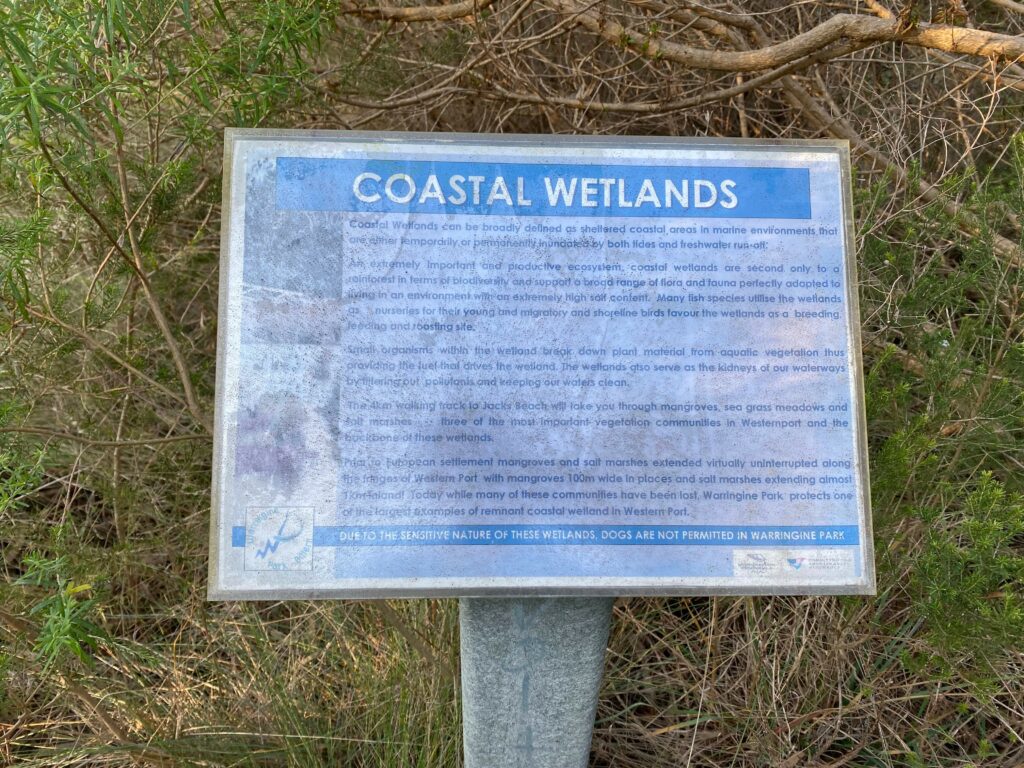
Infosign:
COASTAL WETLANDS
Coastal Wetlands can be broadly defined as sheltered coastal areas in marine environments that are either temporarily or permanently inundated by both tides and freshwater run-off.
An extremely important and productive ecosystem, coastal wetlands are second only to a rainforest in terms of biodiversity and support a broad range of flora and fauna perfectly adapted to living in an environment with an extremely high salt content. Many fish species utilise the wetlands as nurseries for their young and migratory and shoreline birds favour the wetlands as a breeding, feeding and roosting site.
Small organisms within the wetland break down plant material from aquatic vegetation thus providing the fuel that drives the wetlands. The wetlands also serve as the kidneys of our waterways by filtering out pollutants and keeping our waters clean.
The 4 km walking track to Jacks Beadle will take you through mangroves, sea grass meadows and salt marshes – three of the most important vegetation communities in Westernport and the backbone of these wetlands.
Prior to European settlement mangroves and salt marshes extended virtually uninterrupted along the fringes of Western Port with mangroves 100m wide in places and salt marshes extending almost 1 km inland! Today while many of these communities have been lost, Warringine Park protects one of the largest examples of remnant coastal wetland in Western Port.
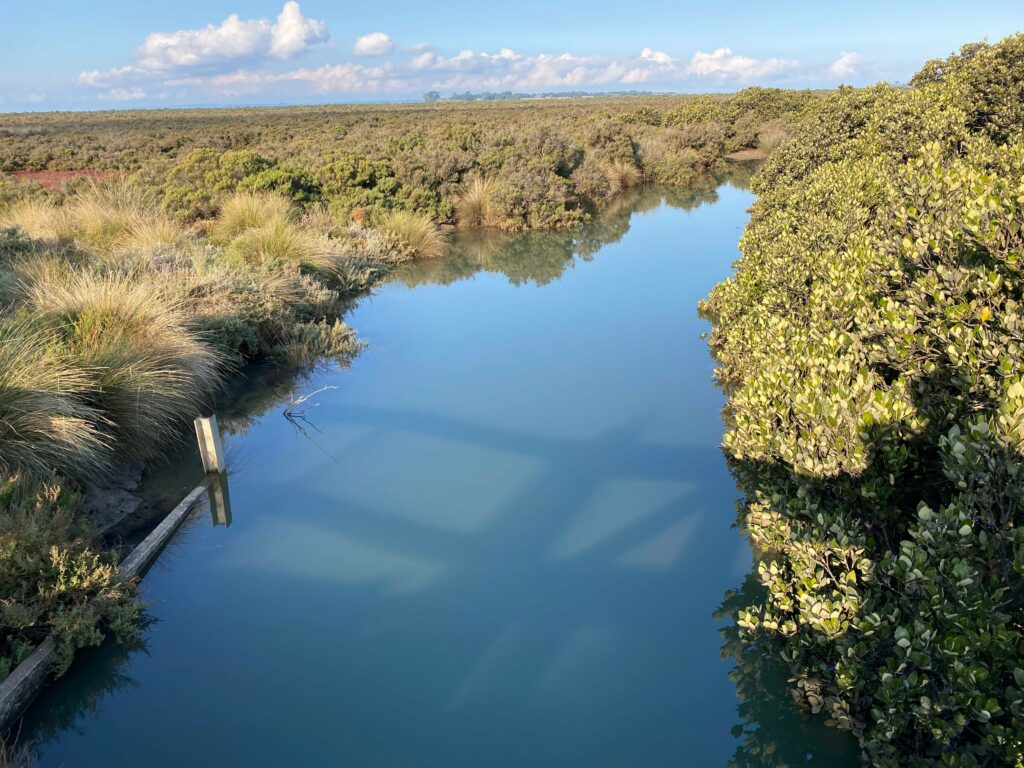
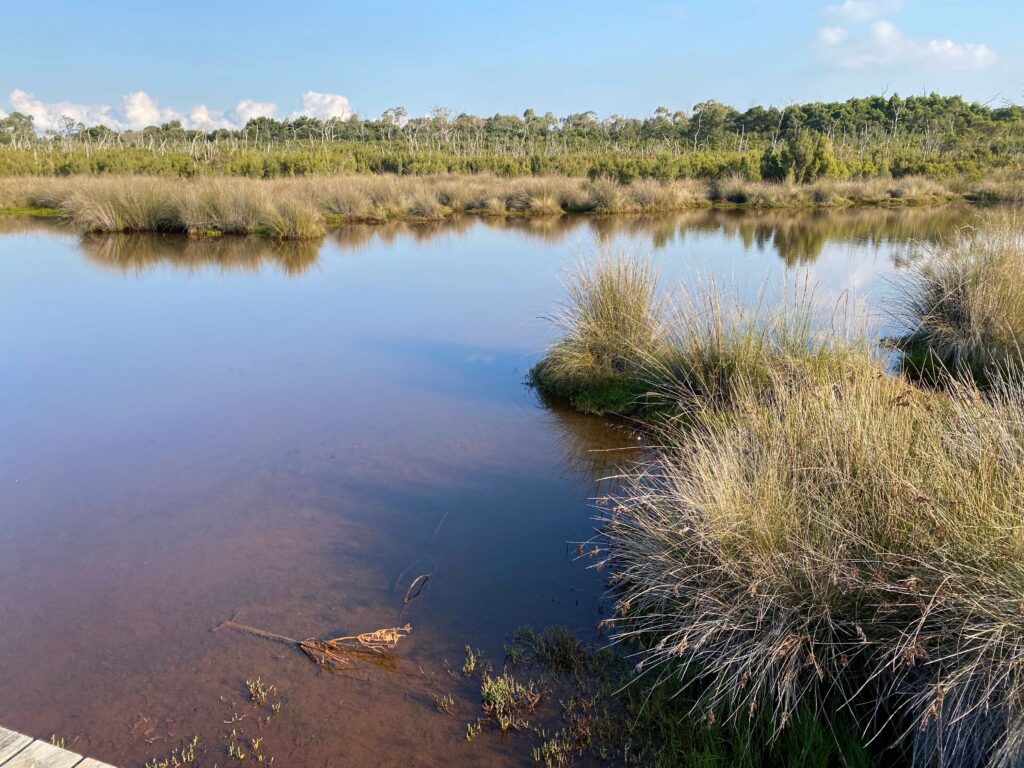
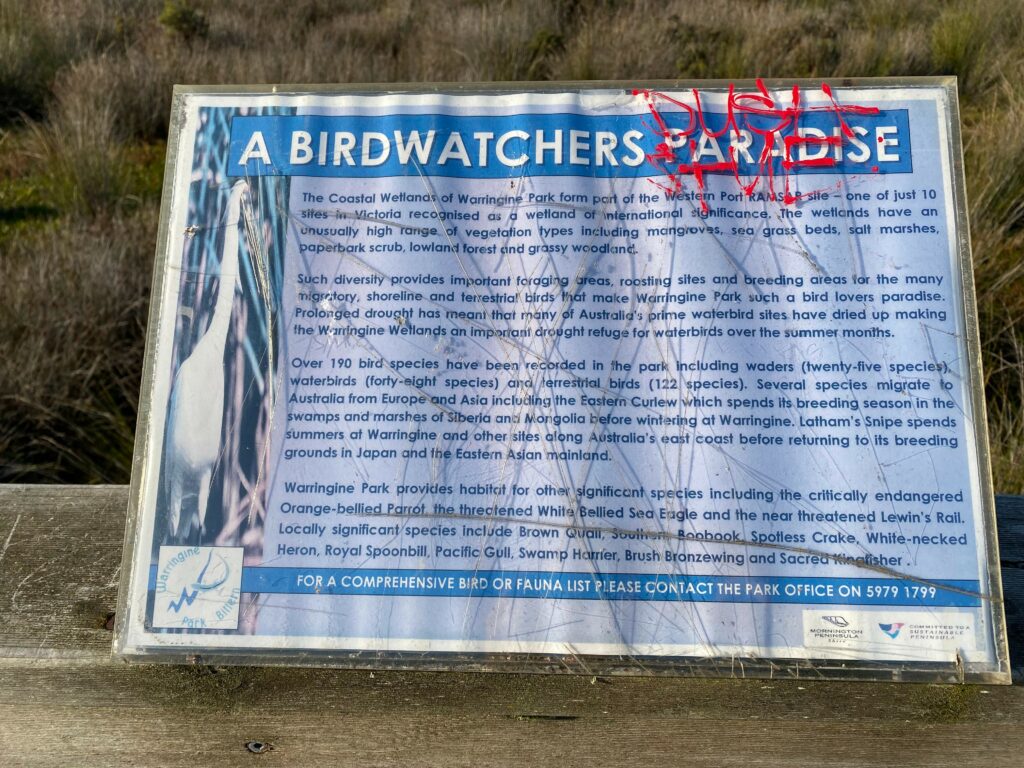
Another infosign:
A BIRDWATCHERS PARADISE
The Coastal Wetlands of Warringine Park form part of the Western Port RAMSAR site – one of just 10 sites in Victoria recognised as a wetland of international significance. The wetlands have an unusually high range of vegetation types including mangroves, sea grass beds, salt marshes, paperbark scrub, lowland forest and grassy woodland.
Such diversity provides important foraging areas, roosting sites and breeding areas for the many migratory, shoreline and terrestrial birds that make Warringine Park such a bird lovers paradise. Prolonged drought has meant that many of Australia’s prime waterbird sites have dried up making the Warringine Wetlands an important drought refuge for waterbirds over the summer months.
Over 190 bird species have been recorded in the park Including waders (twenty-five species), waterbirds (forty-eight species) and terrestrial birds (122 species). Several species migrate to Australia from Europe and Asia including the Eastern Curlew which spends its breeding season in the swamps and marshes of Siberia and Mongolia before wintering at Warringine. Latham’s Snipe spends summers at Warringine and other sites along Australia’s east coast before returning to its breeding grounds in Japan and the Eastern Asian mainland.
Warringine Park provides habitat for other significant species including the critically endangered Orange-bellied Parrot, the threatened White Bellied Sea Eagle and the near threatened Lewin’s Rail. Locally significant species Include Brown Quail, Southern Boobook, Spotless Crake, White-necked Heron, Royal Spoonbill, Pacific Gull, Swamp Harrier, Brush Bronzewing and Sacred Kingfisher.
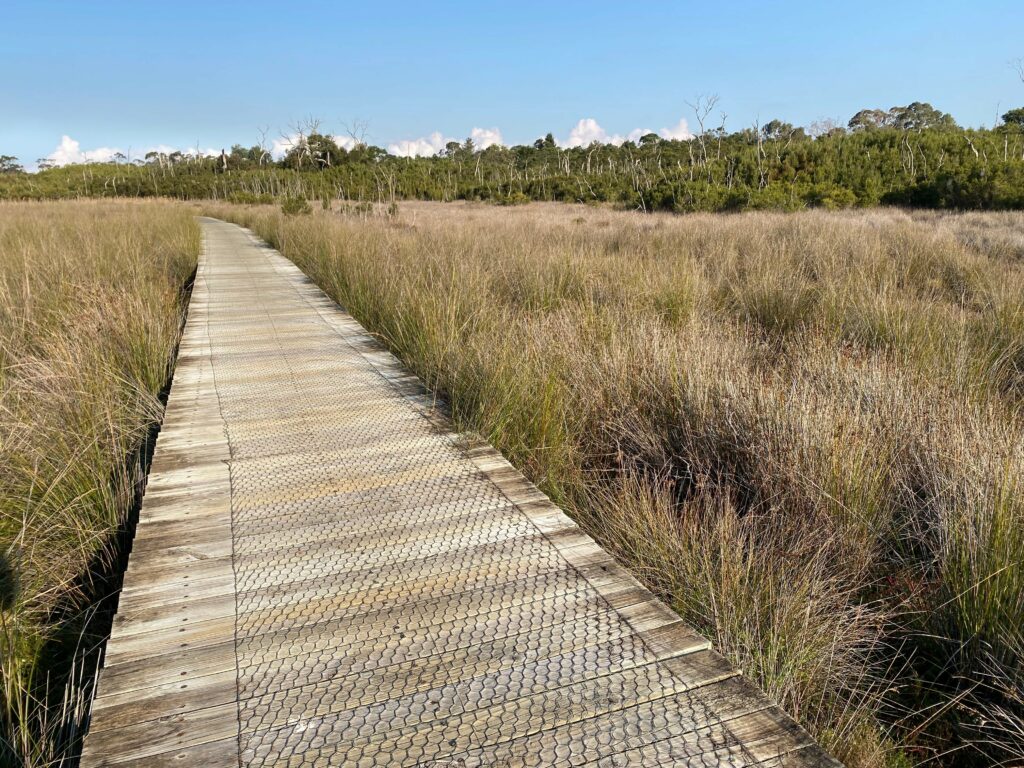
Finally we reached the Jacks Beach.
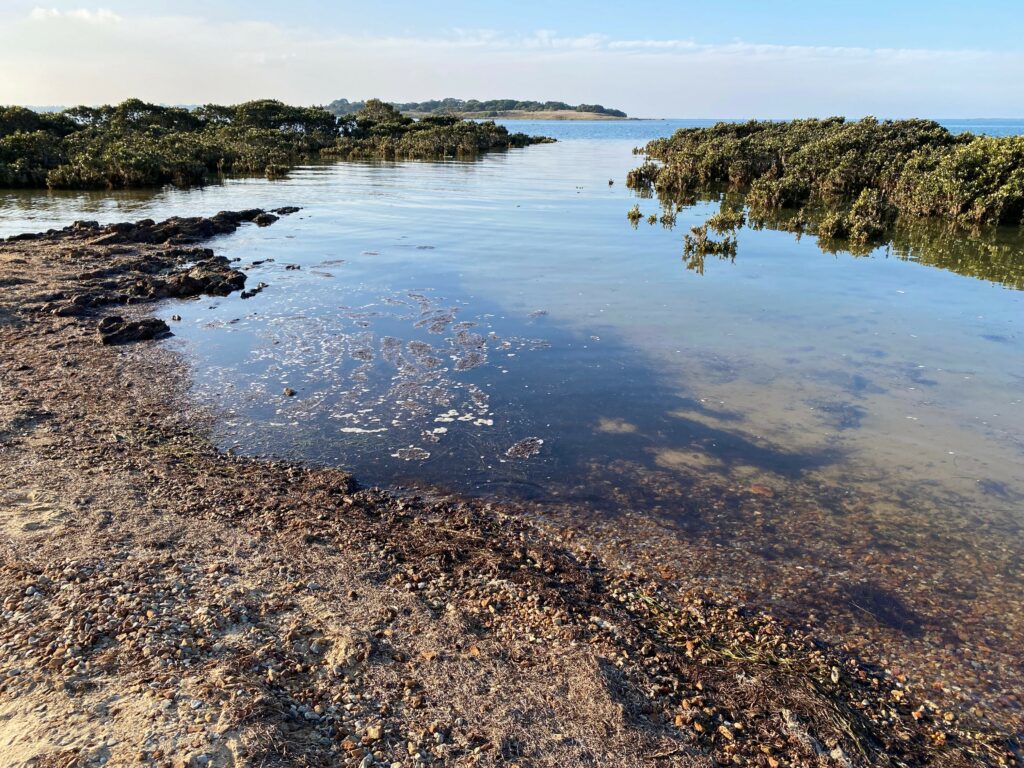
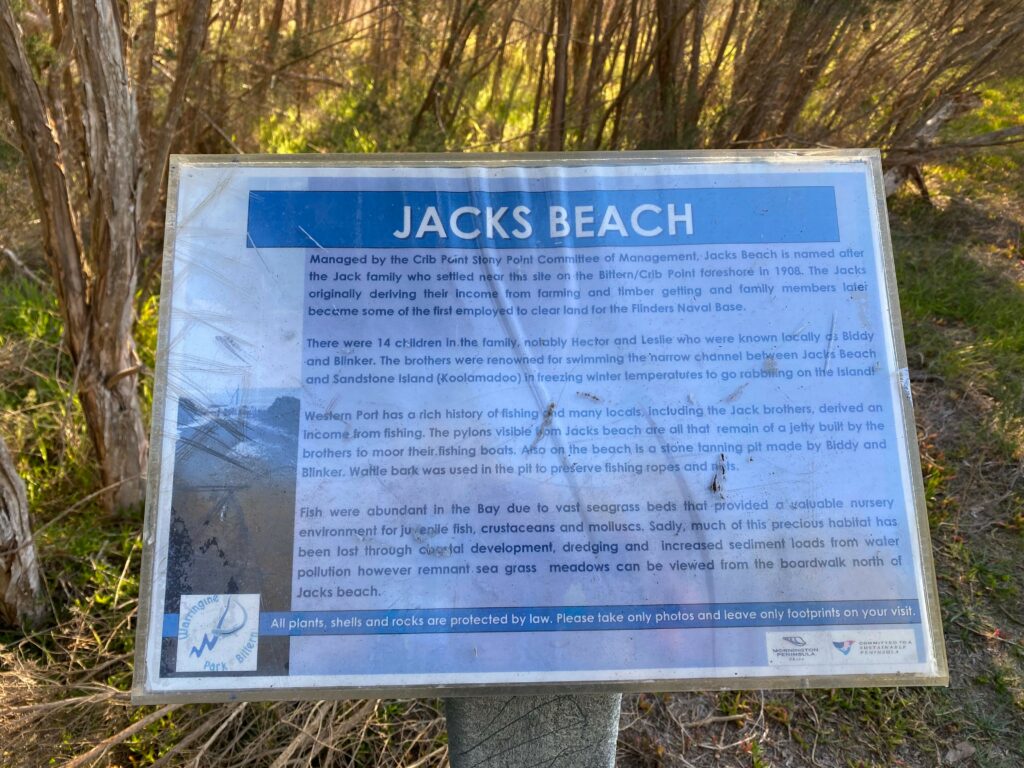
Sign reads:
JACKS BEACH
Managed by the Crib Point Stony Point Committee of Management. Jacks Beach is named aller the Jack family who settled near this site on the Bilten/Crib Point foreshore in 1908. The Jacks originally deriving their income from farming and limber getting and family members later become some of the first employed to clear land for the Flinders Naval Base.
There were 14 children in the family, notably Hector and Leslie who were known locally as Biddy and Blinker. The brothers were renowned for swimming the narrow channel between Jacks Beach and Sandstone Island (Koolamadoo) in freezing winter temperatures to go rabbiting on the Island!
Western Port has a rich history of fishing and many locals including the Jack brothers, derived an Income from fishing. The pylons visible from Jacks beach are all that remain of a jetty built by the brothers to moor their fishing boats. Also on the beach is a stone tanning pit made by Biddy and Blinker. Wattle bark was used in the pit to preserve fishing ropes and nets.
Fish were abundant in the Bay due to vast seagrass beds that provided a valuable nursery environment for juvenile fish, crustaceans and molluscs. Sadly, much of this precious habitat has been lost through coastal development, dredging and increased sediment loads from water pollution however remnant sea grass meadows can be viewed from the boardwalk north of Jacks beach.
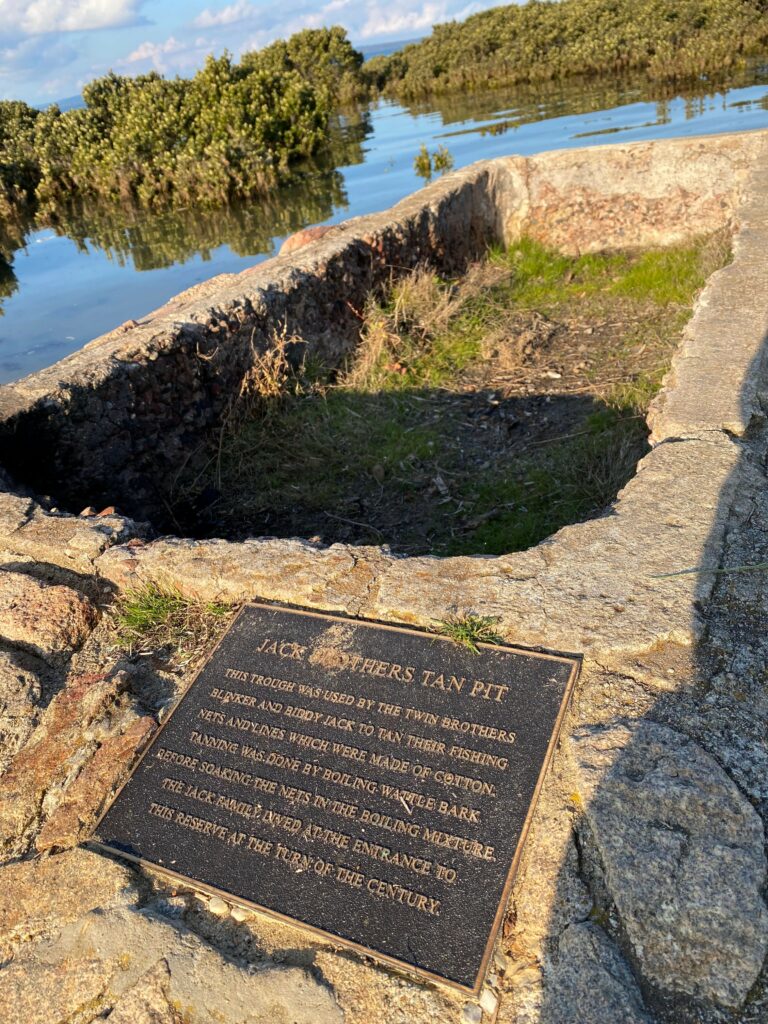
This trough was used by the twin brothers Blinker and Biddy Jack to tan their fishing nets and lines which were made of cotton. Tanning was done by boiling wattle bark before soaking the nets in the boiling mixture. The Jack family lived at the entrance to this reserve at the turn of the century.
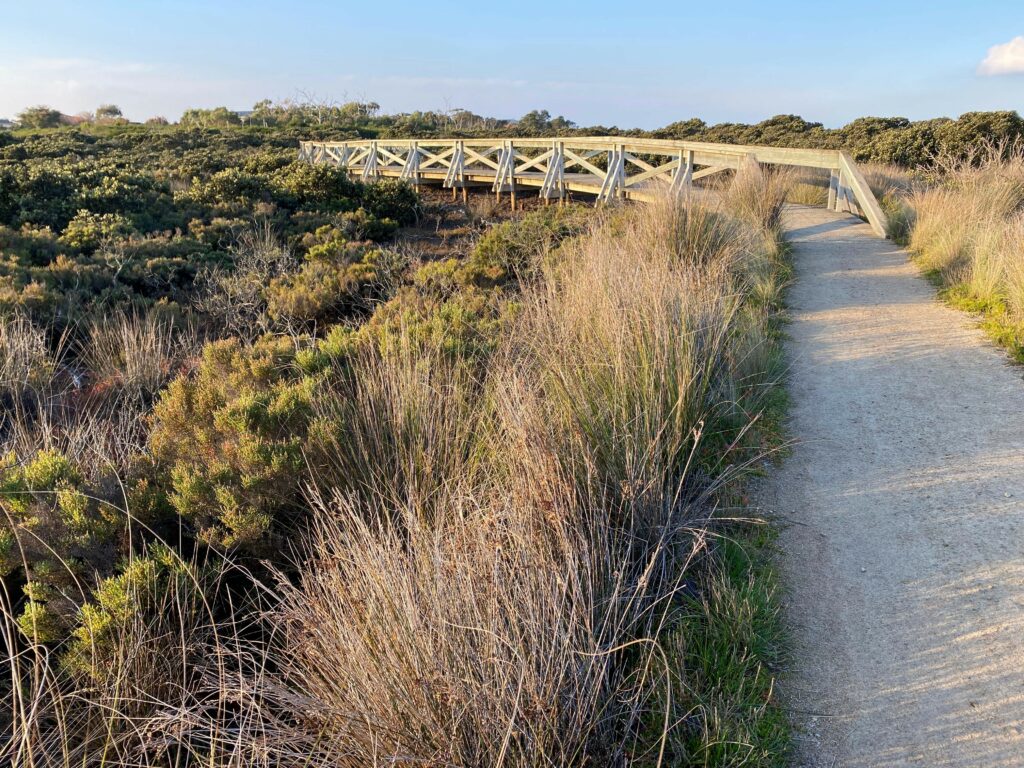
We enjoyed walking in the sunshine. It took us 2 hours and 10 minutes to walk 10 km.
| Trail Name | Warringine Park Boardwalk |
| Distance | 9.4km return |
| Estimated Time | 2-3 hours |
| Grade | 2-3 |
| Type | Return |
| Park | Warringine Park |
| Access | 2WD (dogs not allowed) |

